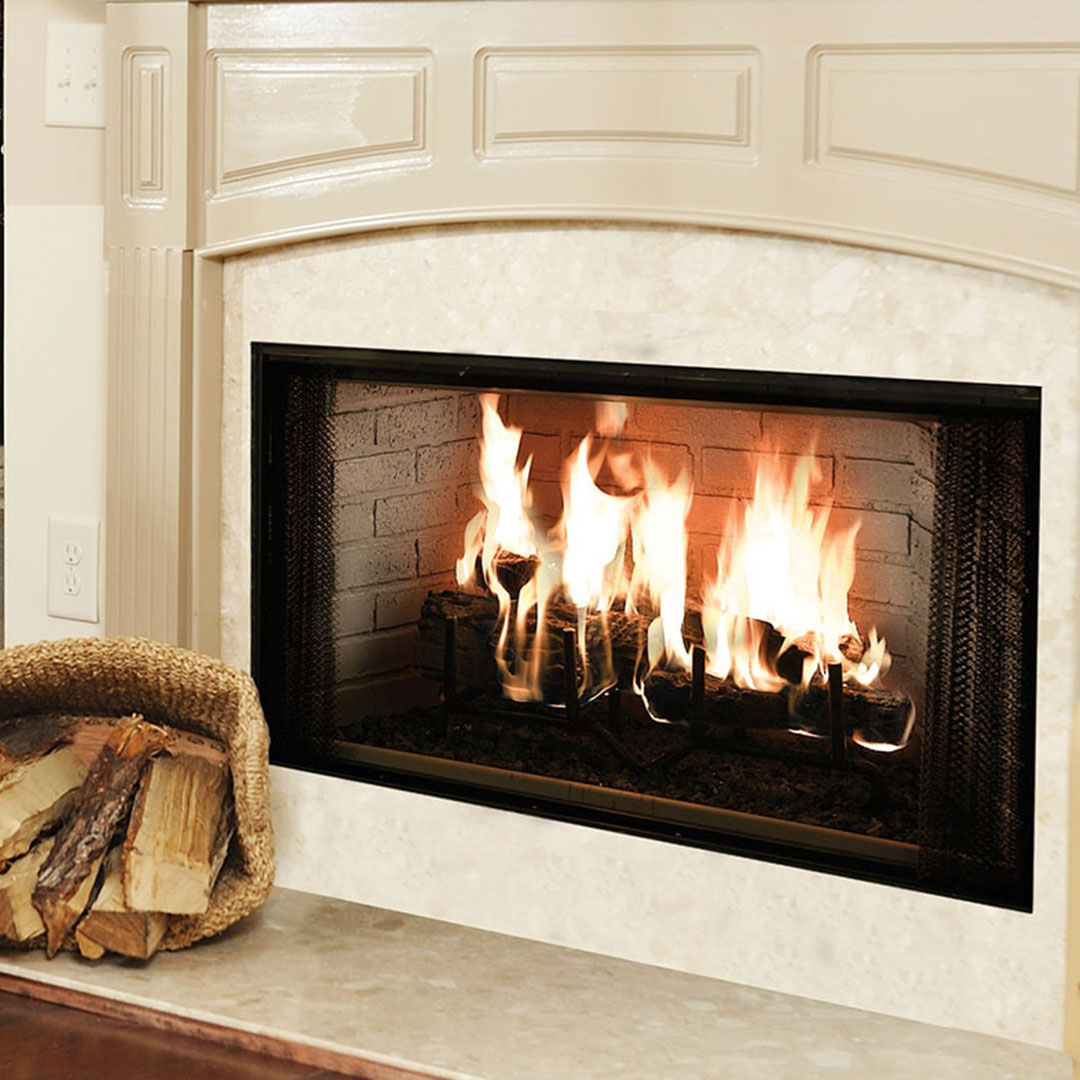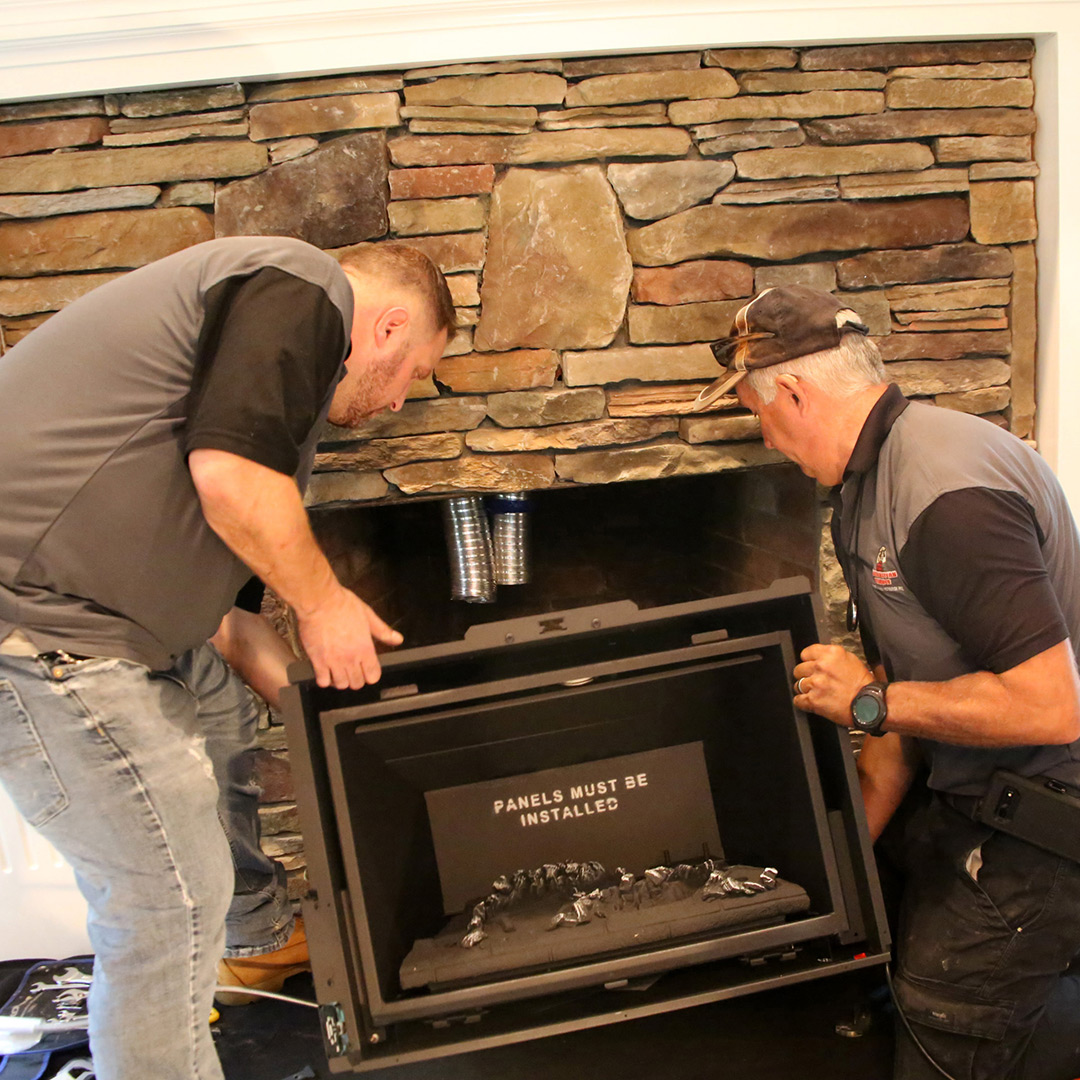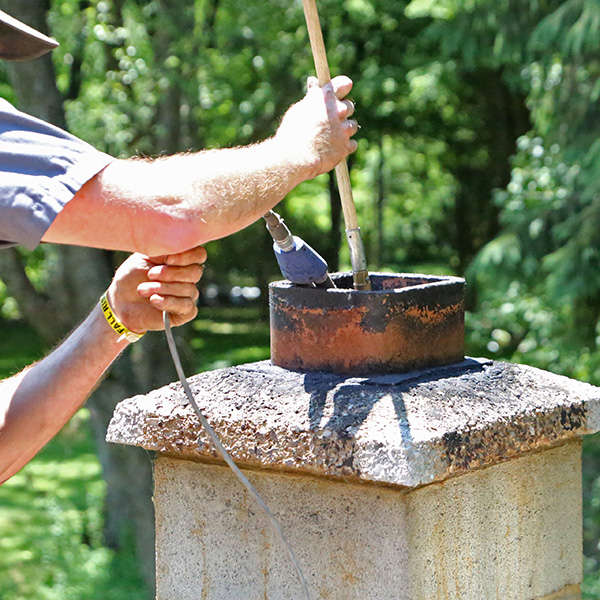When it comes to maintaining a safe and efficient home heating system, the integrity of your chimney liner is paramount. This often overlooked component plays a crucial role in protecting your chimney walls from heat and corrosion, thereby extending the lifespan of your chimney.
The cost of a chimney liner can vary widely depending on several factors including material, chimney dimensions, and the complexity of installation. This guide aims to explore these aspects in detail to help you make an informed decision about this essential home investment.
What is a Chimney Liner?
A chimney liner, crucial for the safety and efficiency of a home’s heating system, is a conduit that lines the inside of a chimney flue, guiding combustion products safely to the outside. Below, we explore the different types of liners, their materials, and their purposes.
Types of Chimney Liners
Chimney liners come in various materials, each suited to different types of heating appliances and chimney conditions:
- Clay Tile Liners: Traditional and economical, clay tile liners are common in older homes. They are well-suited for wood-burning fireplaces but can be brittle and difficult to replace or repair.
- Metal Liners: Made from stainless steel or aluminum, metal liners are versatile and durable, ideal for upgrading older chimneys or for use with gas and oil appliances. They are easier to install and maintain compared to clay tile liners.
- Cast-in-Place Liners: These liners are formed by pouring a cement-like mixture into the chimney to create a seamless, heat-resistant lining. They are excellent for reinforcing structurally weak chimneys and improving their performance but are more costly and labor-intensive to install.
Choosing the Right Liner
Selecting the right chimney liner depends on several factors:
- Appliance Type: The heat output and type of fuel used by your heating appliance (wood, gas, oil, coal) will dictate the suitable liner material to ensure safety and efficiency.
- Chimney Condition: Older, deteriorating chimneys might require more robust liners like cast-in-place to enhance structural integrity and safety.
- Local Building Codes: Always consider local regulations and building codes which can influence the type of liner required for legal and safety reasons.
- Budget and Longevity: The costs vary widely among different liner types with clay being the least expensive but less durable, and cast-in-place being the most durable but also the most expensive.
Technological Advances in Liners
Recent advancements have introduced innovative materials such as flexible stainless steel and ceramic liners that offer enhanced protective qualities. These new technologies are designed to provide superior durability, improved energy efficiency, and compatibility with more complex chimney designs.
Factors Influencing Chimney Liner Costs
The cost of installing a chimney liner is influenced by several key factors, each contributing to the total expense you can expect. Understanding these variables can help homeowners budget appropriately for the project.
Material Type
The choice of material significantly impacts cost. Common liner materials include:
- Stainless Steel: Known for its durability and resistance to corrosion, stainless steel is a popular choice but can be more expensive than other options.
- Aluminum: Lighter and less expensive than stainless steel, aluminum liners are suitable only for certain types of gas appliances due to their lower heat tolerance.
- Clay Tiles: Often used in older homes, clay tiles are inexpensive but labor-intensive to repair or replace.
- Cast-in-Place: This method provides a strong, seamless liner, ideal for older or damaged chimneys, but it is also one of the most expensive options due to the complexity of installation.
Chimney Size and Accessibility
The size of the chimney and ease of access for workers can affect installation costs. Larger chimneys or those with difficult access (e.g., steep roofs, tall structures) require more materials and labor, increasing overall costs.
Condition of the Existing Chimney
If the existing chimney is in poor condition, preparatory work such as cleaning, repairing, or removing an old liner may be necessary before installing a new one. This additional work can add to the total cost of the project.
Type of Appliance Connected
The type of heating appliance the chimney serves also plays a role. For instance, chimneys that service high-efficiency boilers, furnaces, or multiple appliances might require more durable liners or additional modifications, increasing costs.
Local Building Codes and Permits
Compliance with local building codes and the need for permits can also influence costs. Some regions have strict requirements regarding the type of chimney liners used and the installation process, which can necessitate more expensive solutions or additional paperwork and fees.
Labor Costs
Labor costs can vary widely depending on the region, the complexity of the installation, and the company performing the work. Professional installation is recommended, especially for more complex liner types like cast-in-place or for homes with accessibility issues.
Average Costs for Different Types of Liners
When planning to install a chimney liner, it’s important to understand the potential costs involved. Prices can vary significantly based on the type of liner, material, and the specific needs of your chimney. Here’s a breakdown of average costs for different types of liners:
Stainless Steel Liners
Stainless steel liners are favored for their durability and compatibility with various fuel types. The cost for stainless steel liners typically ranges from $600 to $3,000, including installation. The price may vary depending on the thickness of the steel and the complexity of the installation. Stainless steel is recommended for both new installations and upgrades of existing liners.
Aluminum Liners
Aluminum liners are a more cost-effective option but are limited to certain types of gas appliances that operate at lower temperatures. Prices for aluminum liners can range from $500 to $2,500 installed. They are lighter and easier to install than stainless steel, which can reduce labor costs, but their longevity and application are more limited.
Clay Tile Liners
Clay tile liners are the most traditional type of liner and are often found in older homes. The cost to install new clay tiles can be quite variable, generally ranging from $2,000 to $4,000, depending heavily on the accessibility of the chimney and the need to replace existing tiles. Clay tiles require a more labor-intensive installation process but are a good choice for maintaining the historical integrity of older structures.
Cast-in-Place Liners
Cast-in-place liners provide a robust and long-lasting solution, making them ideal for reinforcing weakened or deteriorating chimneys. The installation involves pouring a cement-like material into the chimney to form a solid, seamless liner. This process is labor-intensive and can cost between $2,000 and $7,000, depending on the height and condition of the chimney.
Flex Liners
Flex liners, made from flexible materials like corrugated stainless steel, are particularly useful for chimneys with bends or irregular shapes. They are easier to install in such situations and are priced similarly to regular stainless steel liners but may incur additional costs for complex configurations.
Installation Process and Labor Costs
The installation of a chimney liner is a critical task that should ideally be handled by professionals due to the technical skills required and the safety implications involved. Here’s an overview of the typical installation process and the associated labor costs.
Installation Process
The process of installing a chimney liner generally involves several key steps:
- Initial Inspection and Cleaning: Before installation can begin, the chimney must be thoroughly inspected for any damage, blockages, or buildup of soot and creosote. It may need to be cleaned to ensure that the new liner can be installed properly.
- Measurement and Preparation: Accurate measurements of the chimney flue are taken to ensure that the liner will fit properly. This includes determining the length and diameter required.
- Fitting the Liner: Depending on the type of liner (rigid or flexible), it is either lowered down into the chimney or assembled within. Flexible liners are typically pulled down from the top using ropes or other tools.
- Sealing and Insulation: Once in place, the liner is connected to the heating appliance and sealed at both the top and bottom to prevent any leaks. Insulation may be added around the liner to improve heat retention and protect the chimney structure.
- Final Inspection and Testing: After the installation is completed, a final inspection is performed to ensure everything is correctly installed and functioning. This may include a smoke test to check for any leaks.
Labor Costs
Labor costs for chimney liner installation can vary significantly based on several factors:
- Type of Liner: Rigid liners generally require more labor to install than flexible liners, particularly in chimneys with bends or obstructions.
- Complexity of Installation: The more complex the installation, the higher the labor costs. This includes factors such as the height of the chimney, ease of access, and whether the chimney requires any repairs before the liner can be installed.
- Regional Differences: Labor costs can also vary by region, with higher costs in urban areas compared to rural areas.
- Professional Services: Costs can range widely depending on whether you hire a specialized chimney company, a general contractor, or a handyman. Typically, costs can range from $500 to $2,000 for the labor alone, depending on the complexity and duration of the job.
Additional Costs and Considerations
When planning for a chimney liner installation, it’s important to account for not just the liner and labor costs, but also additional expenses that can affect the overall budget. These costs can vary depending on several factors including the state of your chimney, local building requirements, and personal choices concerning efficiency and safety.
Chimney Repair and Preparation
Before a liner can be installed, the existing chimney may require repairs or modifications. This could include masonry work to fix cracks or rebuild sections of the chimney, as well as cleaning to remove soot and creosote buildup. These preparations ensure that the liner can function effectively and safely, and costs can range from a few hundred to several thousand dollars, depending on the extent of damage and the complexity of the repairs needed.
Permits and Inspections
Many localities require permits for the installation of chimney liners, especially if it involves significant modifications to the structure. The cost of these permits varies by location but can range from $50 to $200. Additionally, a professional inspection is often necessary both before and after installation to comply with local safety regulations. Inspection costs can vary, typically ranging from $100 to $500, depending on the level of detail required by the inspection.
Insulation
Adding insulation around the chimney liner can improve its efficiency by keeping heat within the chimney, thus improving the heating system’s overall performance and reducing heat loss. The cost of insulation will depend on the type of insulation material and the size of the chimney but typically ranges from $200 to $1,500.
Additional Accessories
Installation of a chimney liner might also require additional components such as a chimney cap, flashing, and connectors to secure the liner and protect the chimney from water and debris. The costs for these accessories can vary but generally range from $20 to $200 each.
Long-Term Maintenance
After installation, regular maintenance is crucial to ensure the longevity and efficiency of the chimney liner. This includes annual inspections, sweeping to remove blockages and buildup, and occasional repairs. Setting aside a budget for ongoing maintenance can help prevent costly repairs in the future and ensure that the chimney system remains safe to use.
When to Replace a Chimney Liner
Understanding when to replace a chimney liner is crucial for maintaining the safety and efficiency of your home’s heating system. Several signs indicate the need for a replacement, and being aware of these can help prevent more serious issues like structural damage or safety hazards.
Age of the Liner
The lifespan of a chimney liner depends largely on the material and the conditions under which it operates. Stainless steel liners can last up to 20 years or more with proper maintenance, while aluminum liners might need replacement every 5 to 10 years due to their susceptibility to corrosion. Clay and cast-in-place liners can last for decades but might require an upgrade if the heating system changes or if the liner no longer meets current safety standards.
Visible Damage
Regular inspections may reveal damage that necessitates liner replacement. Common signs include:
- Cracks or gaps in the liner, which can allow heat and embers to escape, potentially leading to a chimney fire.
- Corrosion or deterioration, especially in metal liners, which compromises the liner’s integrity.
- Shifting or collapsing segments, particularly in older clay liners.
Performance Issues
Performance setbacks can also signal the need for liner replacement. These include:
- Poor drafting, characterized by smoke entering the home instead of rising through the chimney. This could be due to a liner that is too narrow, blocked, or damaged.
- Condensation within the chimney, which can indicate that the liner does not adequately protect the chimney walls from the heat and byproducts of combustion, leading to moisture buildup and further damage.
Changes to Heating Appliances
If you install a new furnace, boiler, or other heating appliances, it may require a different type of liner to handle the heat output or type of fuel. For example, switching from an oil-based system to a gas system typically requires a liner change to ensure compatibility and safety.
Safety and Code Compliance
Lastly, updates in local building codes or safety regulations may necessitate a chimney liner replacement. Ensuring that your chimney system complies with the latest standards is essential for safety and may also be required when selling your home.
Maintenance and Long-Term Care
Proper maintenance and regular care are essential for maximizing the lifespan and efficiency of your chimney liner. Establishing a routine maintenance schedule helps prevent common issues that could lead to costly repairs or replacements down the line.
Regular Inspections
Schedule annual inspections with a certified chimney professional. These inspections are crucial for identifying potential issues early, such as cracks, blockages, or buildup that could impair the function of the chimney liner. During these inspections, professionals can also verify that the liner continues to comply with local safety codes.
Cleaning
Chimney cleaning should be performed regularly to remove soot, creosote, and other obstructions that can accumulate in the liner. This not only improves the efficiency of your heating system but also reduces the risk of chimney fires. The frequency of cleaning depends on usage but typically should be done at least once a year.
Address Repairs Promptly
If an inspection uncovers minor damages or wear, address these issues promptly to prevent them from worsening. Small cracks or gaps in the liner can often be repaired without needing a full replacement, which can save money in the long run.
Monitor Chimney Performance
Pay attention to the performance of your chimney. Issues such as unusual odors, visible smoke inside the home, or a decrease in heating efficiency can indicate problems with the chimney liner that require professional attention.
Conclusion
Installing and maintaining a chimney liner is a crucial aspect of home safety and heating efficiency. Understanding the different types of liners available and the factors affecting their cost helps homeowners make informed decisions tailored to their specific needs. Regular maintenance, including inspections and cleaning, is vital to ensure that the chimney system functions safely and efficiently over the years.
By investing in the right chimney liner and adhering to a consistent care schedule, homeowners can protect their property and enjoy a warm, safe home environment. Always consult with a professional to choose the best liner for your chimney and to handle any repairs or replacements that might be needed.


 What Causes a Gas Fireplace to Keep Shutting Off?
What Causes a Gas Fireplace to Keep Shutting Off? Remote Control or Switch Malfunction
Remote Control or Switch Malfunction A straight chimney is quite common. It is a job that every chimney sweep is familiar with. But what if a chimney has a curve? Am I out of luck? Can I get someone to clean my chimney?
A straight chimney is quite common. It is a job that every chimney sweep is familiar with. But what if a chimney has a curve? Am I out of luck? Can I get someone to clean my chimney?
